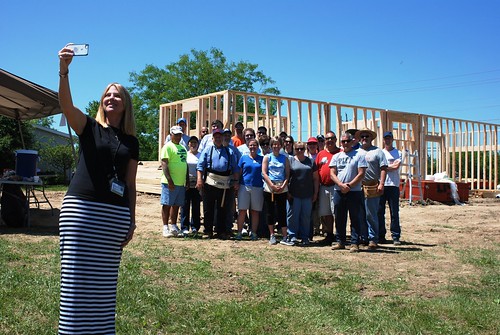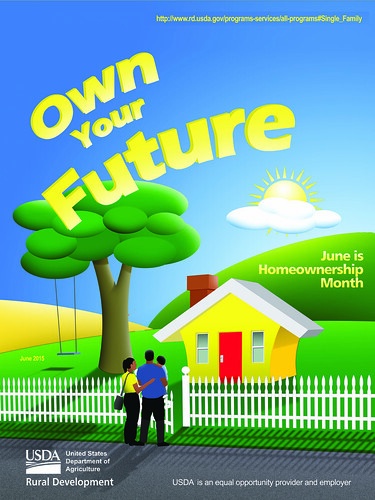
Rural America faces a unique set of challenges when it comes to combating poverty in our towns and communities. Too often, rural people and places are hard to reach or otherwise underserved -- but USDA makes sure they are not forgotten. I believe that USDA and its partners have the tools and the means to expand opportunity and better serve those living in poverty. This month, Homeownership Month, we are celebrating a program that has helped rural families locate and climb ladders of opportunity into the middle class: The Mutual Self-Help Housing Program.
Fifty years ago USDA initiated The Mutual Self-Help Housing Program to provide very low- and low-income families the opportunity to achieve the American dream of homeownership, and in 50 years, USDA has partnered with more than 100 non-profit Self-Help Housing Organizations to help 50,000 rural American families accomplish homeownership.
The Mutual Self-Help Housing Program provides grants to qualified organizations to help them carry out local self-help housing construction projects. Grant recipients supervise groups of very-low- and low-income individuals and families as they construct their own homes in rural areas. Participants in this program contribute most of the construction labor on each other’s homes.
Working in groups, families spend long hours working on their homes whenever they can, in the evenings and on weekends for months. The families together frame the houses; install roofs, put up windows and siding, paint and undertake many of the tasks required to complete each other’s homes- building community along the way.
The hard work, sweat, and dedication of the soon-to-be homeowners reduces construction costs and paired with an affordable mortgage from USDA’s Rural Housing Service, makes homeownership possible for families that would not otherwise be able to become homeowners. The 870 families that participated in self-help housing projects in 2014 each built about $27,500 in equity in their brand-new homes.
Additionally, this program, more than any other, helps increase minority homeownership in rural communities. Consistently, over 50 percent of the mutual self-help homes are built by minorities. Single mothers, women-headed households, also participate successfully in this program, gaining skills, strength, confidence and stability for themselves and their children. Since 2008, USDA has tracked that 41 percent of self-help homes have been built and bought by women-led households.
Since the inception the program, USDA has invested nearly $3 billion dollars in the mutual self-help program to secure homeownership for 50,000 families. I am proud to celebrate this milestone, 50 years and 50,000 homes, with our partner organizations and the families that build their communities. Together we are making it possible for rural families to get on the ladders of opportunity and into the middle class.
Throughout the month of June, we'll share additional stories to showcase how our Mutual Self-Help program is impacting communities across the nation. I'm continually inspired by the very real change that is happening through the efforts of our partners and our homeowners – I'm sure you will be, too.




